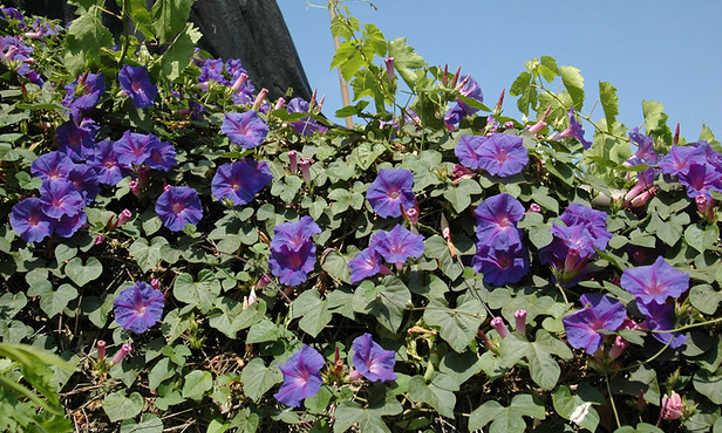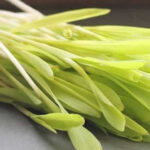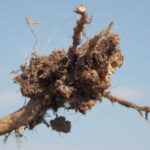Ah, grannyvine! Or Mexican morning glory, or just morning glory. No matter what you like to call it, Ipomoea tricolor is a garden stunner. This annual climbing vine produces trumpet-like blue, pink, or white flowers.
If you’re looking for a fast-growing plant to trellis, this is a great choice. It will rapidly clamber upwards and fill in all available space. Trained up over an arch, or encouraged to cover a pergola, it makes for a beautiful display of flowers.
We’re going to talk all about these phenomenal flowering vines today. It’s not hard to grow them, and you’ll find they’re very willing to work with whatever space you have to spare!
Great Products For Growing Grannyvines:
Overview
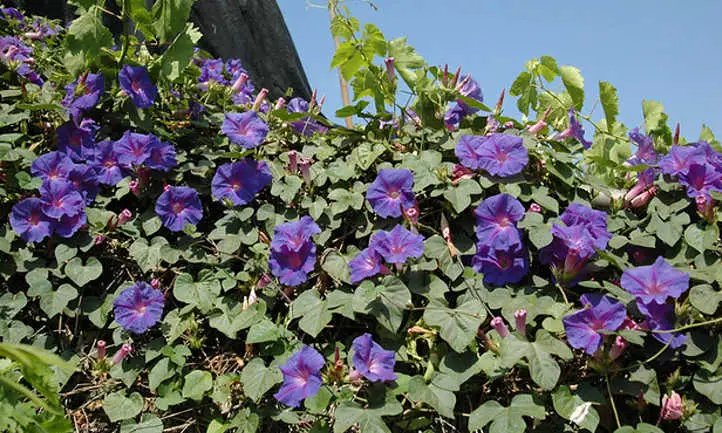
| Scientific Name: | Ipomoea tricolor |
| Common Name(s): | Mexican morning glory, grannyvine, morning glory |
| Family: | Convolvuaceae |
| Height & Spread: | Vines can reach 15 feet long, can be trained up or outward |
| Sun: | Full sun |
| Soil: | Well-draining, sandy or loamy |
| Water: | About 1″ per week |
| Pests & Diseases: | Aphids, mites, leaf miners. Also leaf spots, rots, rust, and blister. |
All About Mexican Morning Glory
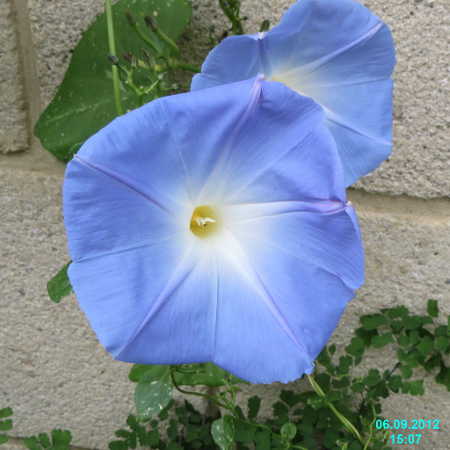
In USDA zones 3-10, Ipomoea tricolor is a common sight. This is especially true in warmer climates where it can create a screen of vines and flowers!
Used regularly to fill in landscaping, this vine is a speedy grower. It rarely becomes invasive, although it can self-seed if the seed heads aren’t removed. Indigenous to the warmer tropical regions of the Americas, it’s grown worldwide now.
Growing from 6-15 feet in height, it’s as likely to creep up a tree or the side of your house as a trellis. Small tendrils extend off the vine and grab onto most surfaces, even other vines!
The leaves are heart-shaped and quite appealing on their own. But most people grow these vines for their trumpet-like flowers. It’s called “morning glory” because its flowers open to the first touches of the morning sun. In fact, they won’t bloom without sunlight!
The Mexican morning glory flower tends to be vividly blue, perhaps ranging to purplish. “Tricolor” refers to the pale yellow center and the streaks of white that form a star-shape along the petals.
Other Ipomoea species (including Ipomoea purpurea and Ipomoea nil) are commonly called morning glories as well. These aren’t the same species as Ipomoea tricolor, although they’re related. Today we’re going to stick with the tricolored variety and its growing conditions, but many other species are out there.
The term “grannyvine” is a common name used for wild-growing ipomoea tricolor. It’s a more accurate term than “morning glory”, simply because it’s less likely to be confused with other species! However, it’s less fashionable. No matter if you call your plants grannyvines or Mexican morning glories, you’ll have something stunning to see.
The “Heavenly Blue” cultivar won the Royal Horticultural Society’s Award of Garden Merit. This variety is what most people think of when they’re referring to this species.
Caring For Your Grannyvine
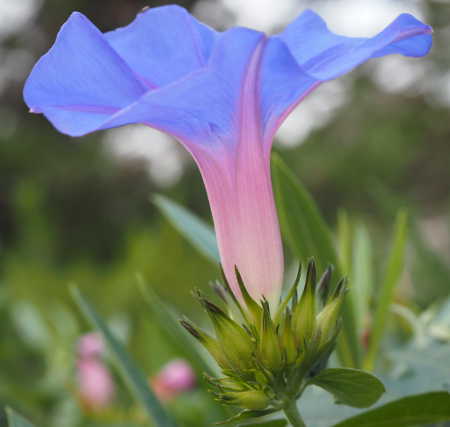
If you provide a fence or trellis for this plant to climb, good sunlight, and water, your grannyvine will do the rest. With insane speed, it can rapidly grow to heights of almost 15 feet tall. The vines will spread out sideways once they run out of climbing surface.
It’s not a very picky plant, but we’ve got tips to help you provide the best conditions for growth.
Light & Temperature
Sun-worshipping Mexican morning glory blooms its best with lots of light. While they can tolerate partial shade, they’re truly best in full sun conditions.
Ipomoea tricolor is best when treated as a warm-weather annual. Conditions below 45 degrees cause damage to the leaves and stems. Plant them out once the weather is consistently above 50-55 degrees and they’ll thrive.
Heat is less of a worry as long as the plant has enough water. The heart-shaped leaves provide some built-in shade to protect the vine.
Those stunning, trumpet-shaped flowers do require full sun to open in the morning. Ensure they’ve got morning sunlight for the best display! In deserts or other areas that regularly spike above 95 degrees, afternoon shade can be good.
This plant can be grown as a houseplant. At a consistent 70-degree temperature, your plant can act as a perennial. It’s tricky to provide enough light for it indoors, and it may not thrive unless it’s got lots of direct sunlight.
Water & Humidity
You’ll need about an inch of water per week to keep your plants happy. In hot weather, provide a bit extra moisture when it’s necessary. Mulching at the base of the plant helps reduce moisture evaporation.
When starting from seed, newly-germinated plants or very young seedlings like humid air. As they develop and put down roots, they harden off to average or dry conditions. Once established, older plants can be surprisingly drought-tolerant. In areas where there are regular dry winds, pick a location that’s sheltered to prevent rapid drying.
Plants which are container-grown will need more water than ones in the ground. Containers often allow for faster evaporation. Maintain damp, but not soggy soil conditions.
Soil
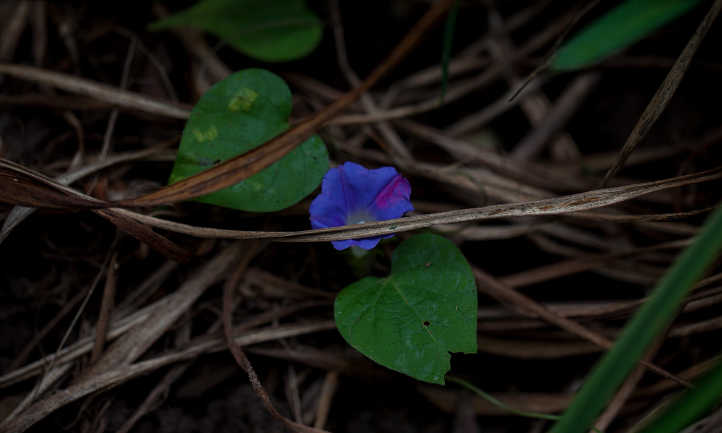
Well-drained soil is key for these plants. While the soil must remain moist as young plants grow, any pooled water will cause problems. It’s better to opt for drainage over moisture retention for ipomoeas.
Moderately fertile soil will produce better growth. Older plants can tolerate poor soil conditions, but they may not flower as much. Avoid soils with lots of composted material, as they’re too rich for your plant.
Ideal soil conditions would be sandy to loamy. Try to avoid clay-like soils. While they can grow in hard clay, it slows root development.
The soil pH is best between 6.0-6.8, but your grannyvine can tolerate up to 7.5 pH. A few cultivars are sensitive to higher alkalinity. This sensitivity manifests as slightly-modified flower color, although it’s not significantly changed.
Fertilizer
If planted in moderately-fertile soil, no fertilizer is necessary. For plants in poor soil, opt for a low-nitrogen fertilizer every 4-6 weeks. Stick with a diluted formula when possible. Balanced or high-nitrogen fertilizers will promote vine growth over flowering.
Unsure about how much to use? For these, opt for underfertilization. They truly don’t need a whole lot to do well.
Propagation
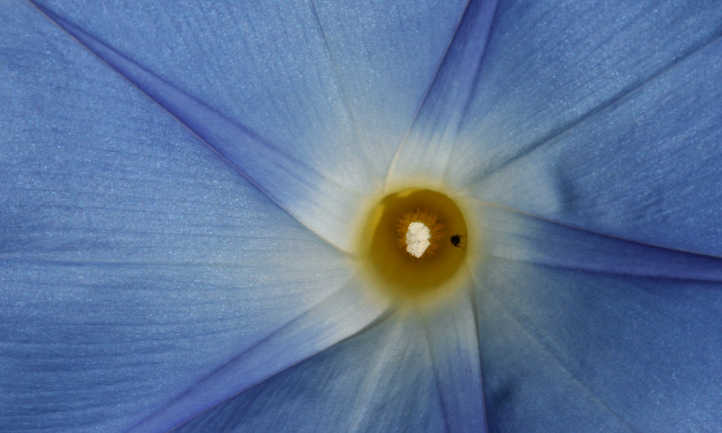
Your Mexican morning glory will happily reseed itself if left to its own devices. Growing them from seed is the easiest method of propagation.
Once the flowers fade, they will form seeds with surprising speed. If you wish to collect the seed, place a paper bag over the seed head and secure it with string or a rubber band. If you want it to self-sow, leave the faded flower in place.
To propagate, plant seeds 1/4″ deep in moist soil. Maintain a soil temperature at or above 65 degrees until germination has occurred. Provide humidity for newly-germinated seeds. Start hardening them off to drier air once the plant has reached 4″ in height.
The seeds are quite hard, and may germinate faster if they have been scratched. To scarify your seeds, rub them briefly between sandpaper to scratch the seedcoat. Place scarified seeds into water for up to 24 hours before planting.
While you can propagate from cuttings, it’s a much slower process and the plant may be weak. It’s far easier to plant new seeds than to try to root cuttings.
Pruning & Training
Training your vines is more important than pruning. As some cultivars can reach heights of up to 15 feet, you can prune to maintain height. But it’s generally better to provide a space where they can grow to their own preferences!
These ipomoeas love to climb, and will attach onto wooden trellises with ease. Even a sturdy stake will provide a good surface for the vine’s tendrils to grasp. If you’ve only got metal trellises, those will work. You may need to add a little extra support by using plastic plant tape to tie the main stems in place.
Keep an eye on your plant, and direct vines back towards the trellis rather than allowing them to splay out. This prevents the plant from creeping towards other surfaces to cling to.
As a shade plant over arches or patios, you can encourage the vines to grow in a particular direction. Simply weave the vines through the growing surface, or use plant tape to secure them in place.
If it’s absolutely necessary, you can prune errant stems. Prune off dead or diseased foliage as needed. To prevent self-seeding, snip off faded flowers as quickly as you can.
Morning Glory Problems
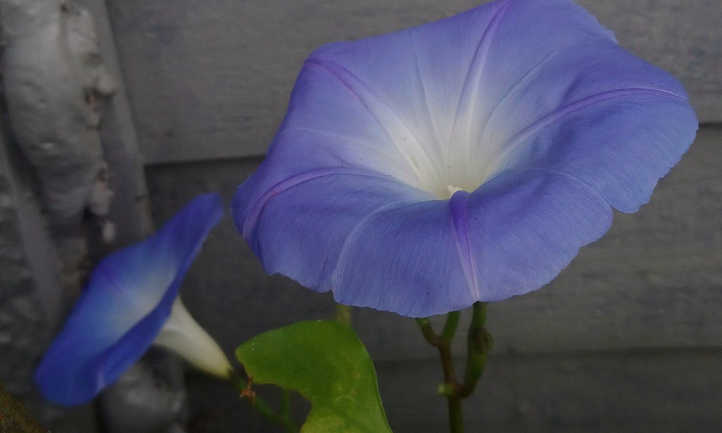
Most problems with ipomoea tricolor are disease-related. The diseases which impact this plant often are hard to combat. Thankfully, they aren’t very common. Let’s go over what might arise so you know how to handle it!
Growing Problems
Yellowing leaves can be caused by many problems. The most common causes, though, are light or watering-related.
Too much watering or not enough watering both cause yellowed leaves. Too little sunlight will also cause yellowing.
It may take a bit of trial and error to figure out what the cause of yellowing leaves is. These are what you should check first. Remedying these issues will often restore the vigor of your plant.
Pests
Most pests don’t do lasting damage to this plant. But there’s still those which feed upon it!
Aphids, particularly the cotton aphid, will suck plant sap from the leaves. These are easily treated with a misting of neem oil. As an alternative, you can blast them off the leaves with a hard spray of water.
Spider mites are another common sucking pest. These tiny mites can be eliminated with neem oil as well. Pyrethrin sprays also are quite effective against them.
Leaf miners are a bit trickier. The leaf miner larvae will actually move into the leaf, making it hard to eradicate them. Prune off leaves with visible leaf miner damage and destroy them. Use neem oil or a bacillus thurigiensis (BT) spray to prevent further spread.
Caterpillars of all sorts find morning glory leaves to be tasty treats. Bacillus thurigiensis in either spray or powdered form will eliminate them.
Finally, this is one of many plants that deer will consume. Of all the pests mentioned here, they’re most likely to cause lasting harm. They will eat both the leaves and the vines, and having a herd of deer come through may destroy your plant. If you live in an area where deer are common, consider using deer repellents.
Diseases
White blister is a disease that’s quite similar to downy mildew. Caused by an oomycete spore, it causes white leaf spots. These spots gradually turn into blister-like pustules of powdery white spores.
At this time, no fungicides are available for the treatment of white blister. Removing leaves and stems which show signs of blister formation is essential. The faster they are removed, the less likely the spores will spread. Destroy any infected material.
Fungal leaf spots such as alternaria are also common in ipomoea species. Liquid copper fungicides are an effective way to treat these.
Stem rots, like those caused by fusarium fungi, may occur in some plants. There’s no cure for fusarium-based rots currently. Because of this, prevention is extremely important. Ensure there’s good airflow around your plants, and make sure that the soil does not get too soggy. This slows the development of fusarium.
While it’s uncommon, thread blight from orchard trees can spread to your morning glory. This causes wilted, brown leaves on the inner shaded portions of the plant. Sometimes a white, thread-like mycelium can be found on leaf surfaces.
Fungicides aren’t very effective on thread blight. Using sterile pruners, trim out infected materials. Sterilize your pruning shears between cuts by dipping them into a solution of 1 part bleach to 9 parts water. Ensure there’s good airflow around your plant.
Finally, an assortment of rust diseases may strike your Mexican morning glory. Treat these by applying a copper fungicide spray. Avoid overhead watering to prevent their spread.
Frequently Asked Questions
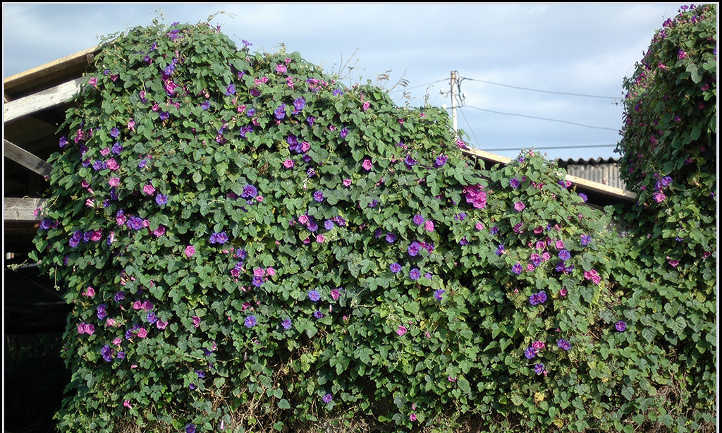
Q: Is morning glory poisonous?
A: Morning glory seeds are considered toxic. They contain lysergic acids which can cause hallucinations (much like the drug LSD). They also can cause a range of symptoms from nausea or vomiting to diarrhea. The leaves and stems typically only cause vomiting.
This toxicity is not just for humans – it’s true for our pets, too. Keep small children and pets away if they’re prone to snacking on your plants.
So if you’re looking for a climber to creep up your gazebo walls, or something to fill in a chain link fence, this will do it. You’ll have an abundance of bright, cheerful flowers. I’m a huge fan of ipomoea tricolor, and I think you’ll find yourself becoming one too!

